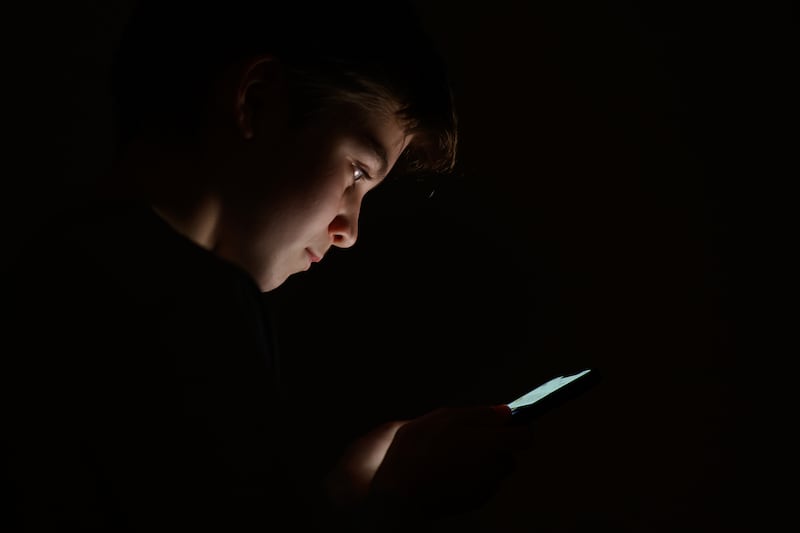We worry about lots of things when we hand our child a phone. From online bullying, to time spent lost in the world of social media, to not engaging in real life. And we worry about the things they might see and the inappropriate content they may be exposed to. With the virtual world at our fingertips, accessing or stumbling across pornography has never been so easy.
So how should we talk to our children about porn, and how soon do we need to have a conversation with them?
“It’s very hard to establish how early children are coming across pornography,” says Dr Colman Noctor, child and adolescent psychotherapist. “Some of the studies say around 60 per cent of 12- to 14-year-olds have come across pornography, but the reliability of data, in terms of how many children would admit to it, is another situation.
[ Part 1: How to talk to your children about . . . pubertyOpens in new window ]
[ Part 2: How to talk to your children about . . . sex ]
“Mostly they come across it through pop-ups – it finds them rather than them finding it. Or it being sent to them by other people. As soon as a child has a phone they’re at risk of coming across pornography, but 12-14 is probably where it starts, and then it can get more explicit and more problematic as they get older.”
The subject needs to be approached with children in an age-appropriate manner, Dr Noctor explains. “I would think this has to be a spiralled conversation. From the developmental point of view you increase the intensity of the conversation as the child gets older. A very young child is not going to have any concept of the significance of pornography.”
Dr Noctor says parents might take “a very basic approach” with this age group, such as “telling them if they come across images of people in certain stages of undress to x out of it, and not to follow any links. Or if they have any questions around it, trying to work it from that point of view.”
As children get older, conversations need to centre around “this is not a reflection of real intimate relationships, and pornography by design is a fantasy, and so not to confuse these images with what actual relationships look like”.

Bullying in schools: how it’s changed and how to handle it
“You can bring in the conversation early, but you need to revisit it. It’s not about one conversation, it’s multiple conversations over time, and preparing them for their stage of development and the pubertal development that they’re at. It needs to be in line with that.”
And how does seeing pornography affect children?
“Very young children don’t really understand what it is, so they can be quite disturbed by it,” Dr Noctor explains. “The thing is we can’t unsee something, so from the point of view of very young children who come across pornography, they can be traumatised by it – if we think about trauma as being introduced to something you’re not socially, emotionally or cognitively able to understand or make sense of.
“Some pre-pubertal children can be a bit mesmerised by it and go back and check it and be found trying to get around their parents’ rules when it comes to pornography.
“From a teenager point of view, obviously there’s an arousal element, there’s pubertal elements, but the biggest concern is that the teenager, because they have no baseline experience of sexual relationships, that they think what they see on pornography sites or pornography movies is real life.
“The problem with pornography is it plays with themes of violence, incest, consent, and the blurring of all of those boundaries are not a reflection of real-life relationships. And so, the teenager who sees that as the baseline of what intimate relationships are and maybe tries to incorporate that into their own sexual lives – that’s when problems can occur.”
But is pornography more of an issue for parents and guardians of boys?
“Viewing pornography is more frequent with boys,” Dr Noctor says, adding, “It’s about those lessons learned. If girls watch pornography and believe that’s the way in which they need to act in a sexual setting, it’s very worrying – where pornography draws the lines of heterosexual normality.
“If boys and girls watch it together, then there is going to be a skewed or warped view of relationships, which is worrying. However, in terms of watching pornography, seeking it and having a problematic relationship with it, it’s less so in girls.”
You’re better off if your child or teenager can come to you and say ‘I’m having worries about this. I’ve seen this and I’m worried that’s what I’ll be expected to do’
— Dr Colman Noctor, psychotherapist
So, if parents discover their child has been watching pornography, how should they address it with their child?
Dr Noctor says parents should not “give out” to their children when broaching the topic as “that will just drive it underground”.
“You need to try and unpick their understanding of what they’re watching and why they watch it. Again, it is about trying to imply the reality of what real-life relationships are like and how that is not a reflection of it. If you think about small children, they leave the cinema after watching Spider-Man, they’re rolling around the floor and trying to climb the walls. Their imitation between reality and what is fantasy is blurred, and the same can happen in pornography.

“The conversations should be about the clarifications of what is real and what is not, as opposed to it being ‘I don’t want you to do that again’. You’re better off if your child or teenager can come to you and say ‘I’m having worries about this. I’ve seen this and I’m worried that’s what I’ll be expected to do’. Or, ‘That’s what my life will be like’. Or, ‘I can’t live up to this image’.”
And conversations shouldn’t be avoided with older teens either. “You have to weigh up the risk of having an uncomfortable conversation and the risk of not having that uncomfortable conversation.
“Do you want your child to get involved in some sort of sexual misadventure issue because you never had a conversation with them about it, or do you want to go through that uncomfortable conversation at the table, but have clarified those issues? I think the risk of not saying it is greater than the risk of having the conversation.”



















